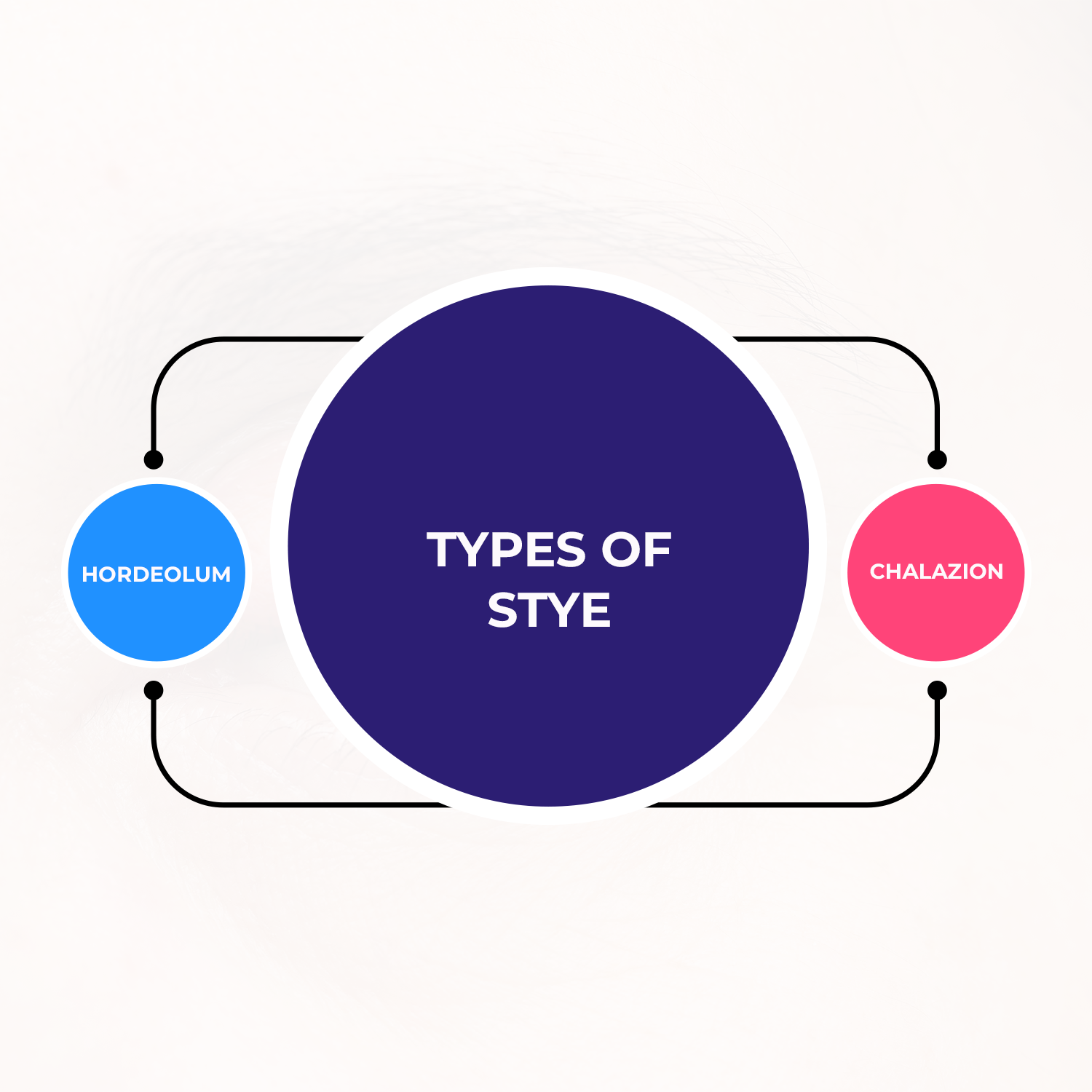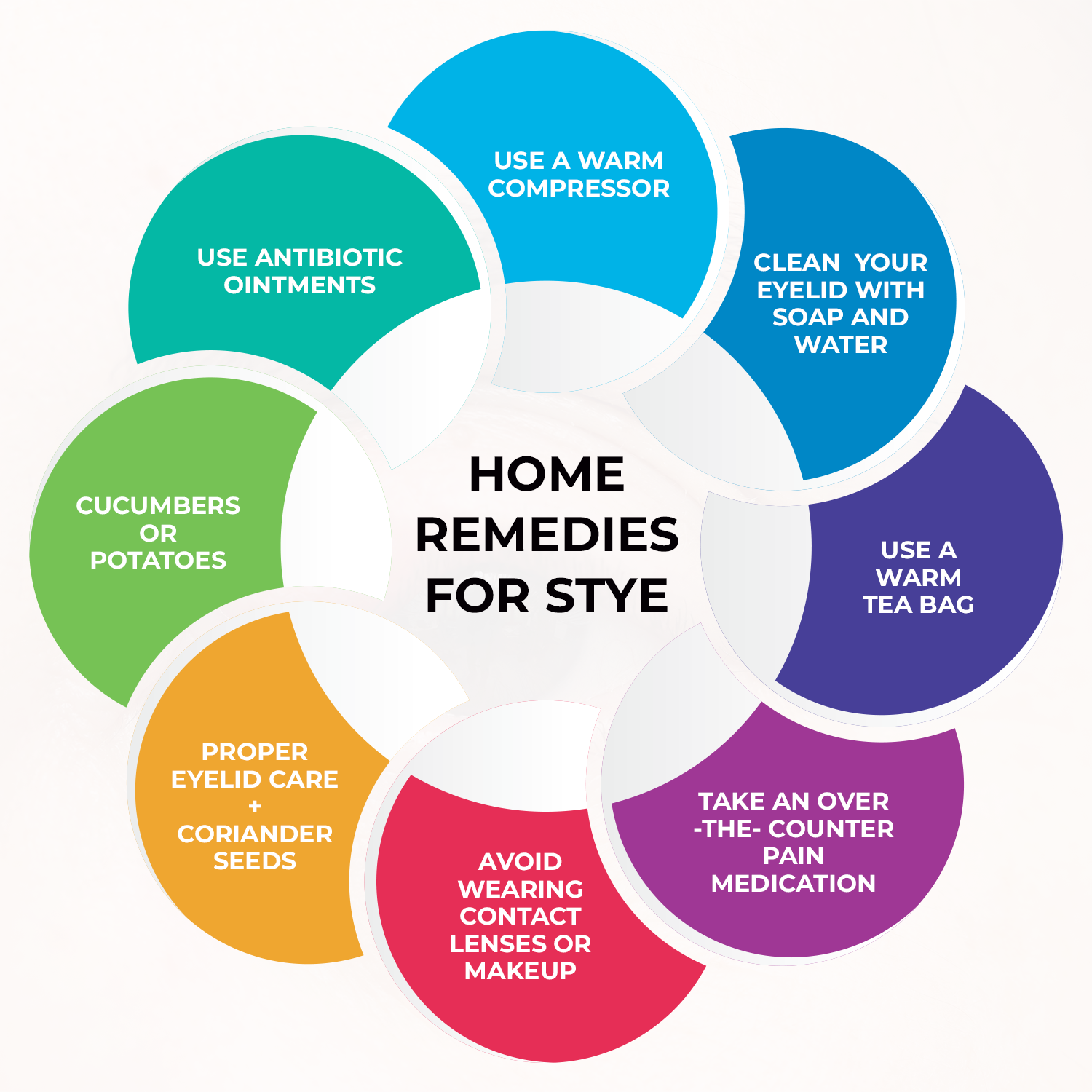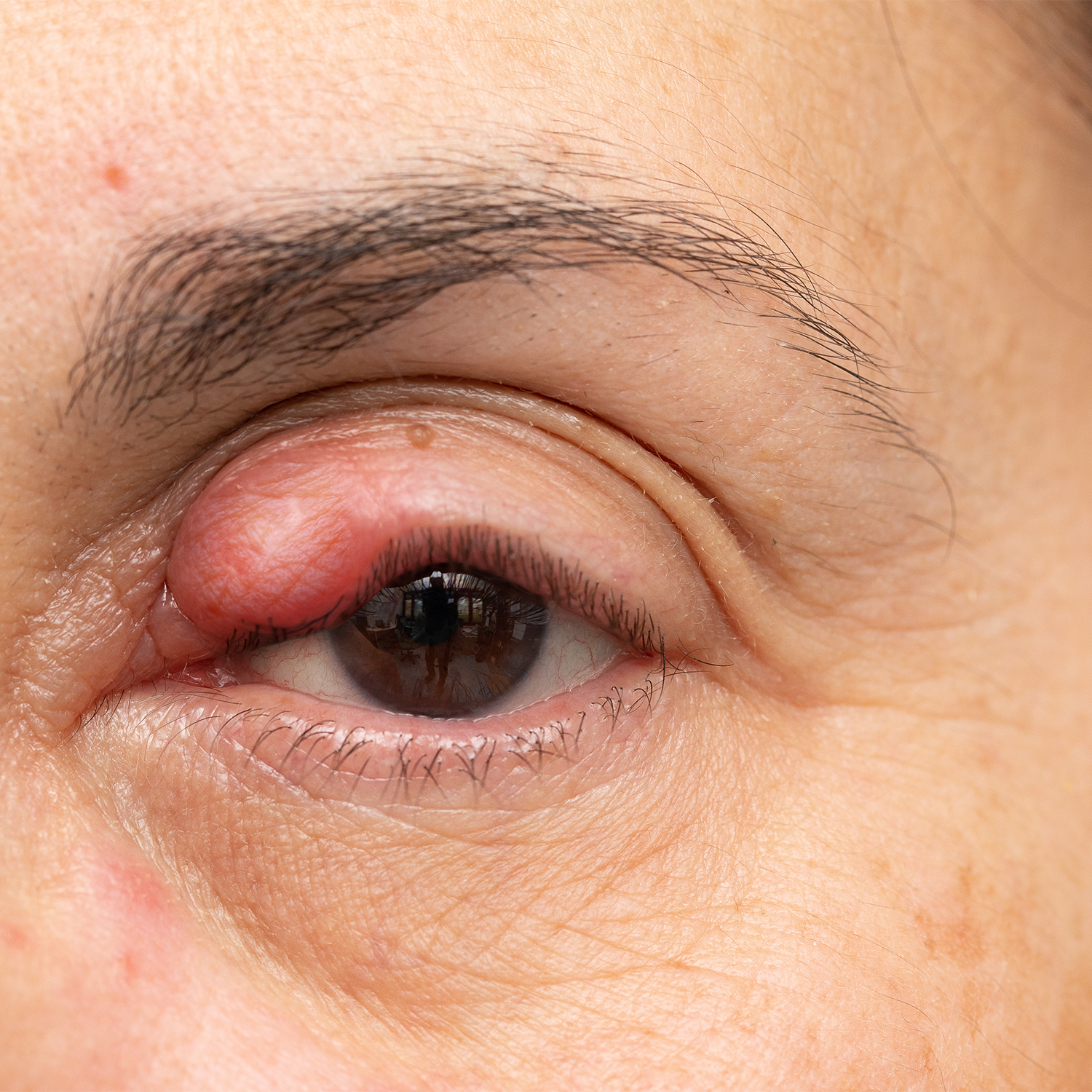A stye is a common condition of the eye that millions of Americans suffer from. Although this condition is not often serious, it can be pretty painful and irritating. Home remedies for stye are sure and fast ways of getting rid of the condition, and you can achieve this from the comfort of your home. Usually, you can treat a stye at home, but there are some situations when you must visit your doctor concerning it. Most styes disappear within a week or two, but most people would still like to know how to eliminate stye from their eyes.
You will learn the following from this post:
Table of Contents
- Meaning of stye
- Types of stye
- Causes of stye
- Risk factors of stye
- Symptoms of stye
- Conventional treatment of stye
- Home remedies for stye
What is a Stye?
A stye, also called a hordeolum, is a red bump – that resembles a pimple – which forms on the outside edge of the eyelid. This is because there are a lot of tiny oil glands in the eyelids, especially close to the eyelashes. Dead skin, oil buildup, or dirt can block or clog these tiny holes. When there is a gland blockage, bacteria can develop inside and cause a stye to grow.
There are two types of styes, according to their locations.
- External: When the stye grows at the base of an eyelash follicle.
- Internal: when a stye is located in the oil glands under or inside the eyelid.
Types of Stye

Types of Stye
There are two significant types of stye: chalazion and hordeolum. These types have different treatments and causes.
- Chalazion: This type of stye occurs due to blockage of the meibomian gland, a sebaceous gland located only in the eyelid. The chalazion is located within the eyelid and opens at the rim of the eyelid behind the eyelashes.
- Hordeolum: This particular kind of stye affects a person because of the blockage of the sweat gland located in the skin of the eyelid below the eyelashes or a small sebaceous gland found below the eyelashes. Sebaceous glands produce sebum, an oily, waxy substance that provides protection and moisture to the hair and skin.
Causes of Stye and Risk Factors
Why does eye stye affect anyone in the first place? You probably know how a pimple grows on your face due to an irritated or clogged skin gland. Your eyelids also have glands that can get infected and clogged. When this infection or clogging occurs, a stye begins to develop. The bacteria associated with the formation of a stye are known as staphylococcus.
How can your eyelid glands get clogged? Again, it’s like a pimple on the body or face – things like oil, bacteria, or dead skin cells can block the glands. An interesting fact is that the oil glands of your eyes usually produce an oil substance that combines with tears to keep the eyes healthy and moist.
There are some risk factors associated with stye. First, the most common risk factor for stye formation is a slow outflow of sebum from the tarsal glands or meibomian glands. People suffering from a condition known as meibomian gland dysfunction commonly develop this suboptimal sebum flow from these glands. Further risk factors for styes include blocking of the gland’s opening by scar tissue due to burns, infections, or trauma. The important glands of the eyelid can also become clogged by things like dust and makeup, especially when the eyelids are not cleaned regularly and properly.
Anyone can suffer from stye of the eye, but there are specific factors that can increase your chance of developing the condition:
- people who have experienced a chalazion or stye in the past are most likely to suffer the condition again in the future
- certain conditions of the skin, such as dermatitis or rosacea
- other medical conditions, such as high serum lipids, swelling of the eyelid, and diabetes
- using old makeup or not entirely getting rid of eye makeup regularly
Symptoms of Stye
A stye usually affects one eye at a time; although both eyes can also be equally affected, it is often rare for such to occur. Early symptoms of the condition are generally mild and might indicate a slight redness or discomfort along the lash line. The eye affected may also feel irritated.
As the stye grows, other symptoms may be associated, such as:
- a red swelling that resembles a pimple along the eyelid, close to the eyelashes
- a small yellow spot in the middle of the bump
- feeling like something is in the eye
- sensitivity to light
- crustiness or eye discharge along the eyelid
- excessive production of tears
- puffiness of the eyes
- pain and tenderness
- increased warmth over the area affected
- epiphora (watering of the eyes)
- crusting around the eyelashes and eyelids
- crusting may result in the eyelids sticking together
- pus discharge that may mix with blood
- Itching
- Fever
- The heaviness of the eye
Conventional Treatment for Stye
How do you eliminate stye from your eyes if you prefer the conventional route? Well, both natural and conventional approaches recommend using warm compresses, including keeping the area of the eye clean and clear by carefully washing it, not using contact while the stye is still active, and avoiding the makeup.
When it comes to eliminating styes, a conventional doctor may ask you to use a topical antibiotic eyedrop or antibiotic cream. If, after applying, the infection doesn’t seem to improve but worsens instead, your doctor may likely ask you to take antibiotics internally. Sometimes, your doctor may surgically cut stye and drain the pus (if the condition is persistent).
Even though styes are relatively harmless, they do not feel or look good. In some cases, you must be patient with your stye and watch it heal on its own. After that, you may not have to apply anything to it. But if you want your stye to go away as soon as possible, you can choose the conventional treatment or home remedies for stye.
Home Remedies for Stye

Home Remedies for Stye
Although a stye may resemble a pimple, squeezing it would be bad. As a stye heals, the fluid within it will drain. So, what are the natural ways you can get rid of a stye? There are some very simple and cheap ways to eliminate a stye using home remedies for stye.
1. Use a Warm Compress
The most effective, cheapest, surest, and easiest way of treating a stye is by using a warm compress. The warmth from the compress helps push the pus to the surface and dissolves the oil and pus so that the stye can naturally drain off. First, dampen a washcloth with warm water. Be certain that the water is not overly hot. Next, wring the cloth so that it is still damp but not dripping. Then carefully and gently place the washcloth over your eye for about 10 minutes. Do not attempt to squeeze the stye or try to puncture it. With each session of the warm compress, you can wet the washcloth again to maintain the warmth factor, but ensure that you do not put a hot washcloth over your eye. The wet warmth of the compress will help drain the stye and speed up the healing process.
2. Clean your Eyelid with Soap and Water
You should avoid using hard, synthetic chemicals when cleaning your eye. The ingredients you use in doing this should be non-irritating and hypoallergenic. Because the skin around the eye is much thinner than the rest of the face, you must be careful about the products you use in your eye area.
You can use tear-free baby shampoo and mix it with a little warm water. Then, use the shampoo with a clean washcloth or a cotton swab to gently wipe off the eyelids. You can practice this process every day until the stye is completely healed. Cleaning your eyelids also keep against future stye attacks. Another option is to apply a saline solution. The solution can help break down bacterial membranes and promote drainage.
3. Use a Warm Tea Bag
Rather than using a warm cloth compress, you can substitute that with a warm tea bag. Black tea is very effective because it helps reduce swelling and contains some antibacterial properties.
Pour boiled water into a mug, then drop a tea bag in the mug, just like you do when making tea for drinking. Allow the tea to steep for about a minute. Wait until the tea bag cools enough to apply over the eye, then keep the bag on your eye for about 10 minutes. Do not apply the same tea bag to the two eyes. Instead, use a different tea bag for each eye. You can use the tea bag as compress twice daily to reduce swelling and any pain that comes with the stye. There are several ways you can get black tea – online or at a local store.
4. Take an Over-the-counter Pain Medication
Take an OTC pain medication like acetaminophen (Tylenol) or ibuprofen (Advil) to get relief. Make sure you follow the instructions with the drug to be sure you are taking the correct dose. If the stye interferes with your daily activity and causes severe pain, consult your doctor.
5. Avoid Wearing Contact Lenses or Makeup
If you are dealing with a stye, do not wear makeup because it can irritate the eye and worsen the condition, further delaying the healing process. You can also contract bacteria from your makeup and tools and risk spreading the infection to the second eye. Wash your reusable brushes regularly. Dispose of any eye product that has been with you for over three months.
If you wear contact lenses, stop doing that because the lenses can irritate the stye. If you can, stick with glasses until the stye is completely healed. Bacteria from the stye can stay on the contact lenses, spreading the infection.
To be on the safe side, replace your contacts with a new set of lenses when your stye has completely healed to prevent reinfection – it does not matter whether you stopped using the lenses or not when you had the stye.
6. Use Antibiotic Ointments
To eliminate a mild stye, you can apply an over-the-counter antibiotic ointment to the area, but consult an eye doctor or a dermatologist to treat a stye that:
- is unbearably painful
- affects the vision
- won’t heal with over-the-counter treatment
To use these over-the-counter ointments, pull the lid of the eye affected and drop about an inch of ointment inside the eyelid. You can either get over-the-counter ointments online or at your pharmacy.
Do not use topical steroids for your stye because they may have side effects. Ensure that any product you use is for use either in or on the eye. Unfortunately, the evidence that antibiotic eye drops work for external styes is not yet conclusive.
7. Proper Eyelid Care + Coriander Seeds
Keeping the eyelids clean is a crucial aspect of stye treatment and prevention since bacteria are the major cause of a stye. You should avoid rubbing your eyes, especially if your hands are dirty or infected, if you have a stye or want to ensure that you don’t have one. Coriander contains antibacterial properties, so it can just be an effective home remedy against stye. Some sources suggest using coriander seeds to make a tea liquid and then applying the coriander liquid (once it’s no longer hot) to the affected eye.
8. Cucumbers or Potatoes
When you are suffering from a stye, putting something refreshing and cool on your eyelids can relieve pain from the stye. Cold cucumber slices can provide cool moisture that can help reduce irritation and inflammation. Slice a cucumber that you have put in a refrigerator and apply a slice on the affected eye for about 10 minutes. If you can’t find a cucumber, a potato slice can also work as effectively.
Final Thoughts
With the home remedies for stye already provided, you can help the natural process since most styes require only little intervention. A stye is unpleasant, but the natural remedies will help it go away quickly. Still, you also have to be patient because the natural remedies will not eliminate the stye overnight. If your stye does not improve even after applying the home remedies, or it seems to worsen rather than get better, then you should see your doctor as soon as possible.
Post Disclaimer
The information contained in this post "8 Amazing Home Remedies To Get Rid Of A Stye" is for educational purposes only. Always consult your primary care doctor before using the remedies that are provided. The information is provided by The Hidden Cures and while we do timely, in-depth research on the information that we provide to you, everything stated may not be up to date or accurate from the time it was written.

A drop of Colloidal Silver can help kill any infection, and help dry out the sty, and lubricating eye drops to restore lubrication to the eye as the silver tends to dry out the eye (resulting in a bit of stinging/burning sensation when first put in), plus it works for pink-eye as well (much faster than prescriptions – first hand knowledge of this).
Colloidal Silver is amazing for many things. Interesting for sty and pink eye, will have to do some research and try this!
I have suffered with this three times, first time was treated with antibiotics – which took 5 days before it responded, the 2nd and 3rd times I used colloidal silver (home-made with the machine from “The Silver Edge” – make sure you use distilled water ONLY, no matter which ‘generator’ you choose, and in my case, both times the issue was resolved in less than 24 hours)
see: https://thesilveredge.com/using-colloidal-silver-for-styes/
I have 3 different ‘generators’, one from ‘The Silver Edge, two from ‘Atlas Nova’ and one from ‘Sota’.
Amazing Phil, appreciate you sharing this!